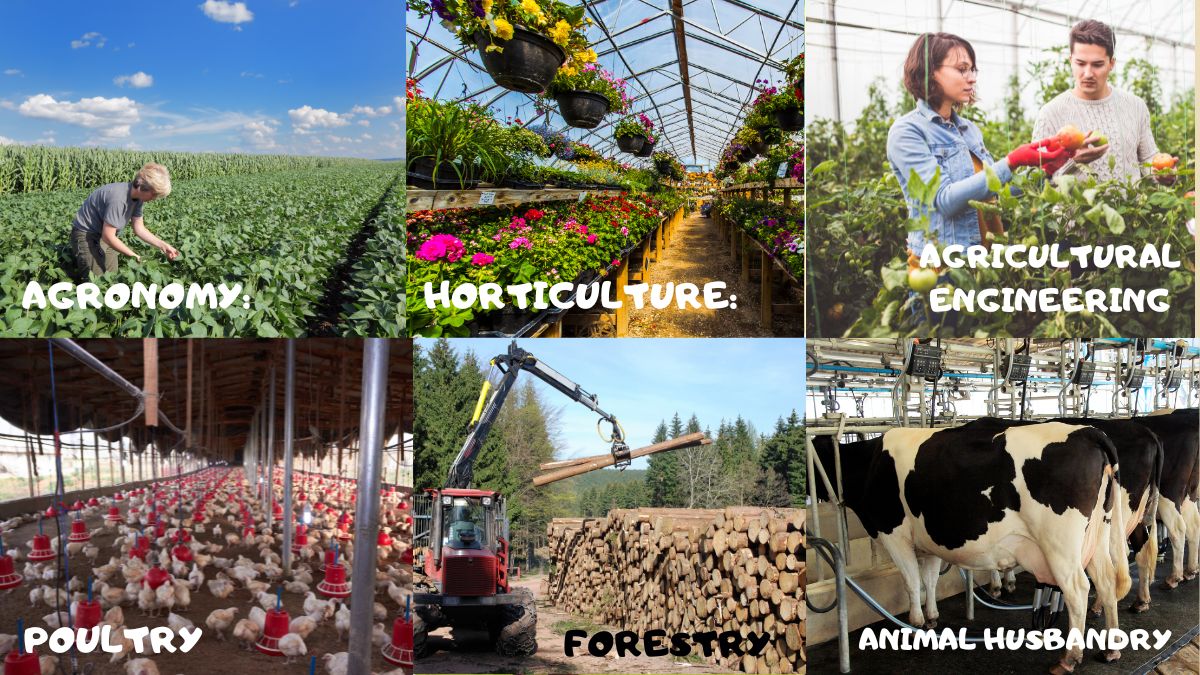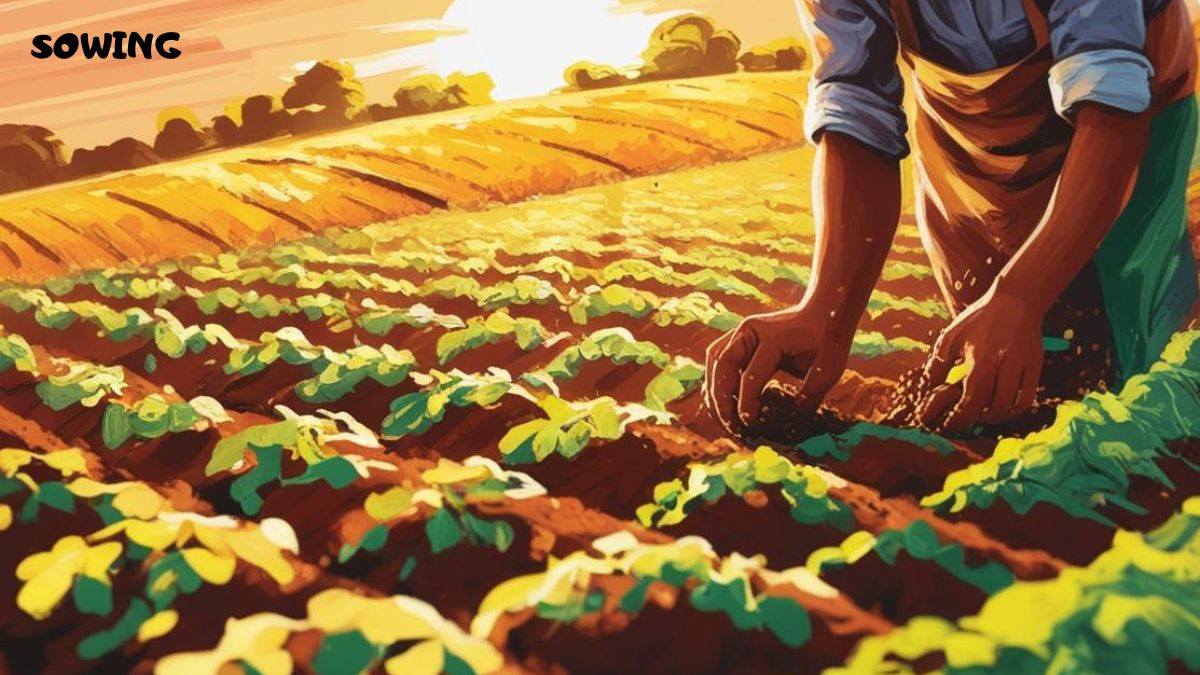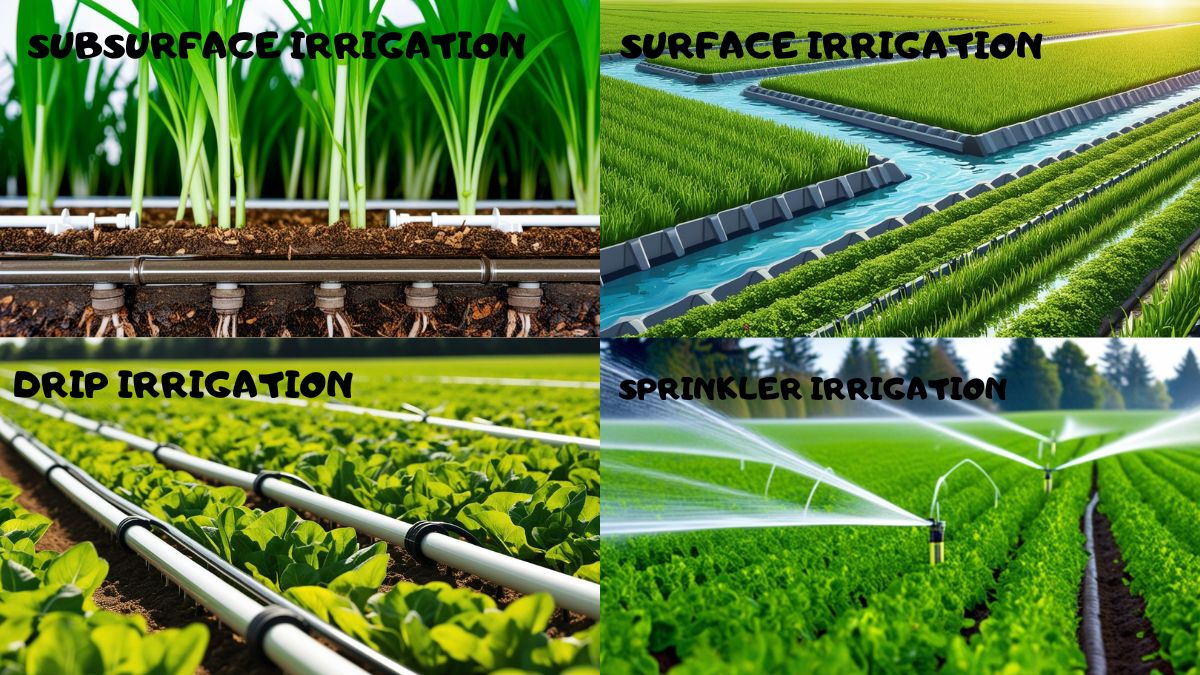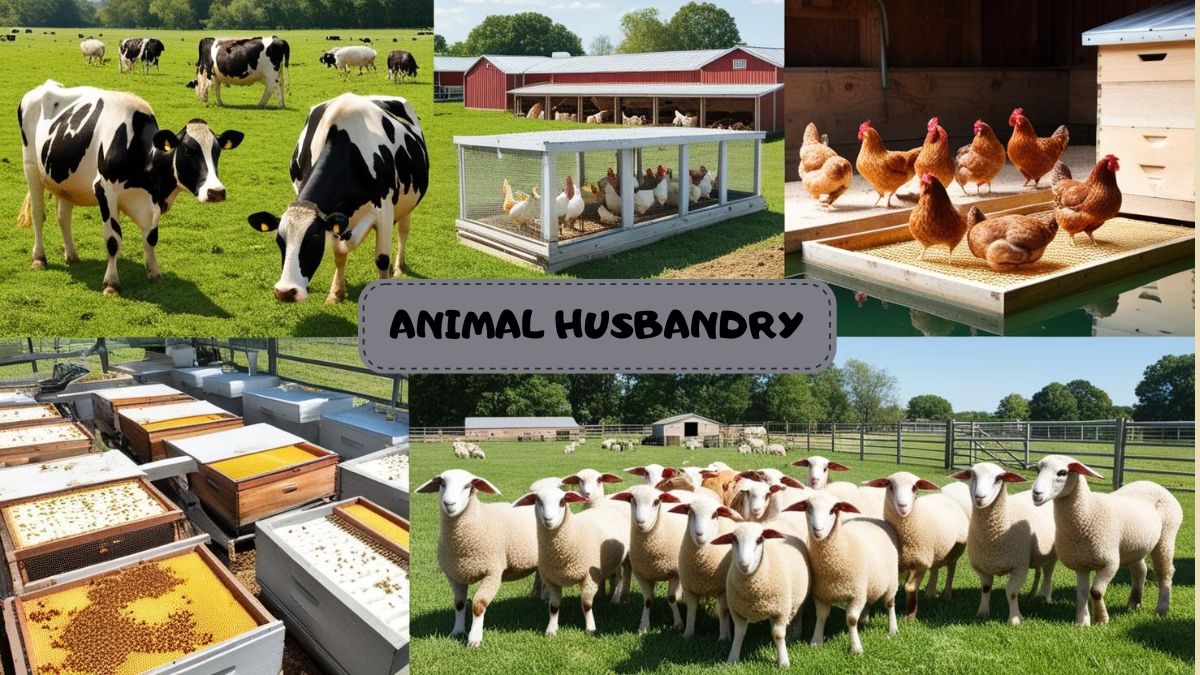Crop Production and Management for Class 7
Introduction
Crop Production and Management is essential for ensuring food security and a stable supply of food resources. It involves various agricultural techniques to cultivate crops efficiently and sustainably. This chapter provides a detailed understanding of Agriculture, Crops and their Types, Agricultural Practices, Crop Improvement and Green Revolution, Animal Husbandry, and Animals as a Source of Food.
1. Agriculture
The term "agriculture" originates from two Latin words: ‘Ager’, meaning land, and ‘Cultura’, meaning to cultivate or grow. It refers to the science of cultivating plants and raising animals for human use, commonly known as farming.
History of Agriculture
Early humans were hunter-gatherers, meaning they survived by hunting animals and collecting wild plants instead of farming. Around 10,000 BC, humans began practicing agriculture by planting crops like barley and wheat. The land where these early crops were first grown became known as the ‘Fertile Crescent’, which marks the birthplace of agriculture.
Branches of Agriculture
Agriculture consists of various branches, each focusing on different aspects of farming and food production. Some key branches include:
-
Agronomy: The study and management of crop production, including the cultivation of crops like fodder, fiber, and food plants.
-
Animal Husbandry: This branch deals with the breeding, care, and management of animals for their products such as meat, milk, wool, and manure.
-
Horticulture: The cultivation of fruits, vegetables, flowers, spices, and ornamental plants.
-
Forestry: The management and cultivation of forests for products like timber, wood, and rubber.
-
Agricultural Engineering: This branch focuses on the design, maintenance, and use of machinery, tools, and equipment used in farming to enhance efficiency and productivity.

2. Crops and Their Types
Crops and their Types can be classified based on different factors like season, life cycle, and purpose.
Classification Based on Season:
-
Kharif Crops – Kharif crops are crops which are sown in the onset of monsoon season and harvested at the end of the monsoon. These are also called monsoon crops. Grown during monsoon (June – September)
-
Examples: Rice, Maize, Cotton, Groundnut
-
Rabi Crops – Rabi crops are crops which are sown in the onset of winter season and harvested before the advent of the summer. These are also called winter crops. Grown during winter (October – March)
-
Examples: Wheat, Barley, Mustard, Peas
Differences between Rabi crops and Kharif crops:
|
Feature |
Rabi Crops |
Kharif Crops |
|
Season of Growth |
Grown in the winter season (October to March) |
Grown in the monsoon season (June to September) |
|
Climatic Conditions |
Requires cool temperature and moderate rainfall |
Requires warm temperature and high rainfall |
|
Sowing Time |
Sown in October-November |
Sown in June-July |
|
Harvesting Time |
Harvested in March-April |
Harvested in September-October |
|
Examples of Crops |
Wheat, Barley, Mustard, Peas, Gram |
Rice, Maize, Cotton, Groundnut, Soybean |
|
Water Requirement |
Moderate water requirement |
High water requirement (depends on monsoon) |
|
Duration of Growth |
Long duration (6-8 months) |
Short duration (3-4 months) |
|
Fertilizer Needs |
Requires moderate to high fertilizer input |
Requires high fertilizer input |
|
Type of Soil |
Loamy or clayey soil |
Sandy loam or alluvial soil |
This table outlines the major distinctions between Rabi and Kharif crops based on their growth periods, climatic conditions, and other factors.
Classification of Crops Based on Their Primary Use
Crops are cultivated for various purposes, and they can be classified according to their primary use as follows:
-
Food Crops: These are crops grown primarily for human consumption. Cereals, such as rice and wheat, are examples of food crops that are produced on a large scale to meet the nutritional needs of people.
-
Cash Crops: These are crops cultivated for commercial purposes, often to be sold in markets for profit. Examples of cash crops include cotton, sugarcane, jute, and oilseeds.
-
Horticultural Crops: These include crops that are grown for their fruits, vegetables, or ornamental flowers used for decorative purposes. Examples include tomatoes, strawberries, and flowering plants like roses.
-
Plantation Crops: These are crops grown on large estates for export and commercial trade. Examples include tea, coffee, rubber, and sugarcane.
Classification of Crops Based on Their Life Cycle
The life cycle of a plant begins with the germination of the seed and continues as it grows through various stages, including root, stem, leaves, flowers, and fruit formation. The duration from seed germination to plant death is known as the plant's life cycle. Based on the time taken to complete this cycle, plants can be classified as annuals, biennials, or perennials:
-
Annuals: Plants that complete their life cycle in a single growing season are called annuals. Examples include wheat, rice, and mustard.
-
Biennials: These plants take two growing seasons to complete their life cycle. Examples of biennials include onions, carrots, and cabbages.
-
Perennials: Plants that live for more than two growing seasons are known as perennials. They can live and produce for several years. Mango, banana, basil, and tomatoes are examples of perennial plants.
3. Agricultural Practices
Agriculture is the backbone of our society, providing food, raw materials, and employment. To ensure that crops grow efficiently and healthily, certain agricultural practices are followed. These practices help improve the yield of crops and maintain soil health. Let's explore the various agricultural practices that form the foundation of Crop Production and Management.
1. Ploughing (Tilling)
Ploughing is the first step in preparing the soil for planting crops. It involves turning the soil using a plough to loosen it and mix in organic matter. The primary benefits of ploughing include:
-
Loosening the soil to allow roots to penetrate deeply.
-
Improving aeration for the roots of plants.
-
Incorporating organic matter, like crop residues, to improve soil fertility.
-
Breaking up weeds and pests that might harm crops.
.jpg)
2. Levelling (Shaping)
After ploughing, the soil may have uneven areas, which can lead to waterlogging or uneven irrigation. Levelling is done to ensure that the field is flat, so that irrigation water is evenly distributed. This can be done using a leveling board or a laser leveling system in modern agriculture.
.jpg)
3. Sowing
Sowing refers to the planting of seeds in the soil. It is crucial to plant the seeds at the right depth and spacing to ensure they have enough space and resources to grow. The main methods of sowing include:
-
Broadcasting: Seeds are scattered manually or by a machine over the soil.
-
Drilling: Seeds are planted in rows using a machine.
-
Transplanting: Seeds are first germinated in a nursery and then transplanted to the field once they grow strong enough.

4. Irrigation
Water is essential for plant growth, and irrigation is the practice of providing water to crops. Depending on the crop type, weather conditions, and soil, different irrigation methods are used:
-
Surface irrigation: Water is allowed to flow over the soil to reach plant roots.
-
Drip irrigation: Water is directly delivered to the roots through pipes with small holes.
-
Sprinkler irrigation: Water is sprayed over the crops, simulating rainfall.

5. Weeding
Weeds compete with crops for water, nutrients, and space, so it’s important to remove them regularly. Weeding can be done manually or using herbicides. Some farmers also use mulching (covering the soil with organic or plastic materials) to prevent weed growth.

6. Thinning
Thinning is the process of removing excess plants to ensure that the remaining plants have enough space and resources to grow properly. It is typically done after germination, when plants are too close together. Thinning promotes better air circulation and sunlight penetration.
7. Manuring and Fertilizing
Crops require nutrients like nitrogen, phosphorus, and potassium to grow. Manuring involves adding organic matter (like compost, manure, or green manure) to the soil to improve its fertility. Fertilizing involves adding chemical fertilizers that contain essential nutrients for plant growth. Both practices are important to ensure healthy crops.
8. Pest and Disease Control
Plants can be affected by pests (like insects) and diseases (like fungi or bacteria), which can damage crops. There are several ways to control pests and diseases:
-
Chemical control: Using pesticides and fungicides.
-
Biological control: Using natural predators, like ladybugs to control aphids.
-
Cultural control: Rotating crops or using resistant varieties to prevent pest buildup.
-
Mechanical control: Physically removing pests or diseased plants.
9. Harvesting
Harvesting is the process of gathering mature crops from the fields. It is important to harvest at the right time, as crops that are harvested too early or too late may have reduced quality or yield. The harvesting method depends on the crop:
-
Manual harvesting: Crops are cut by hand or with simple tools.
-
Mechanical harvesting: Large machines, like combine harvesters, are used for large-scale harvesting.
10. Storage
Once crops are harvested, they must be stored properly to prevent spoilage. Proper storage involves:
-
Drying: Crops like grains are dried to reduce moisture and prevent mold growth.
-
Cool storage: For fruits and vegetables, storing in a cool, dry place helps preserve freshness.
-
Packaging: Crops are often packaged in sacks, boxes, or crates for easy transport.
11. Crop Rotation
Crop rotation is the practice of growing different crops in the same field in successive seasons. This helps maintain soil fertility, reduces the buildup of pests and diseases, and prevents soil erosion. For example, legumes like beans are often rotated with cereals like wheat to replenish nitrogen in the soil.
12. Green Manuring
Green manuring is the practice of growing certain plants (such as legumes) and ploughing them back into the soil to improve its fertility. This is a sustainable farming practice that increases organic matter in the soil and provides natural nutrients for the crops.
13. Post-Harvest Processing
After harvesting, crops may undergo various processing methods to add value and make them suitable for consumption or sale. This can include:
-
Grinding grains into flour.
-
Packing fruits and vegetables for retail.
-
Canning or freezing perishable crops like tomatoes or peas.
4. Crop Improvement and Green Revolution
Crop Improvement and Green Revolution involve scientific advancements to increase agricultural productivity.
Crop Improvement Techniques:
-
Hybridization – Cross-breeding different plant varieties for better yield.
-
Genetic Modification (GM Crops) – Altering plant genes to resist pests and enhance productivity.
-
Use of High Yielding Varieties (HYVs) – Developing crops that produce more grains in less time.
Green Revolution:
The Green Revolution was an agricultural movement in the 1960s-70s that significantly increased food production using:
-
HYV seeds
-
Chemical fertilizers and pesticides
-
Improved irrigation methods
-
Modern farming techniques
Advantages of the Green Revolution:
✔ Increased food production
✔ Reduced famine and hunger
✔ Improved farmers' income
Disadvantages of the Green Revolution:
✖ Excessive use of fertilizers and pesticides led to soil degradation
✖ Increased water consumption for irrigation
✖ Loss of traditional and indigenous crop varieties
5. Animal Husbandry
Animal Husbandry is the practice of breeding and raising livestock for food, fiber, labor, and other products. It involves proper care, feeding, and management of animals to ensure their health and productivity.

Types of Animal Husbandry:
-
Dairy Farming – Rearing cattle like cows and buffaloes for milk production.
-
Poultry Farming – Rearing chickens, ducks, and turkeys for eggs and meat.
-
Fish Farming (Pisciculture) – Breeding fish in controlled environments for food.
-
Beekeeping (Apiculture) – Rearing bees to produce honey and wax.
-
Sheep and Goat Farming – Rearing sheep and goats for wool, meat, and milk.
6. Animals as a Source of Food
Animals as a Source of Food play a crucial role in human nutrition. They provide essential proteins, vitamins, and minerals.
Classification Based on Food Obtained from Animals:
Key sources of food from animals include:
-
Milk – Obtained from cows, buffaloes, goats, etc., rich in calcium, protein, and vitamins.
-
Meat – From animals like cows, pigs, goats, and chickens, providing high-quality protein and essential amino acids.
-
Eggs – Laid by poultry birds such as hens and ducks, offering protein and vitamins.
-
Honey – Produced by bees, a natural sweetener with antibacterial properties.
-
Fish – Rich in Omega-3 fatty acids and proteins, sourced from both freshwater and marine environments.
Importance of Animal Products in Nutrition:
-
Milk – Rich in calcium, protein, and vitamins.
-
Eggs & Meat – High in protein and essential amino acids.
-
Fish – Rich in Omega-3 fatty acids.
-
Honey – Natural sweetener with antibacterial properties.
Fun Facts About Crop Production and Management
-
Ancient Agriculture: The earliest evidence of crop cultivation dates back to around 10,000 years ago in the Fertile Crescent, where humans first began farming wheat and barley!
-
Rice: The "Water Lover": Rice is one of the few crops that actually thrives in flooded fields. In fact, the practice of growing rice in flooded conditions helps control weeds and pests naturally.
-
Wheat is Everywhere: Wheat is grown on every continent except Antarctica! It’s one of the most widely cultivated crops, feeding billions of people around the world.
-
Crops Can "Talk": Plants have their own version of "communication." Some crops, like corn, release chemicals into the air to warn nearby plants about pests. It’s like a plant alert system!
Things You Have Learned!
- Crops are plants cultivated for food, clothing, and other purposes.
- The two principal cropping seasons are Kharif and Rabi.
- Major practices: soil preparation, sowing, application of manure/fertilizers, irrigation, weeding, harvesting, and storage.
- Improved efficiency in farming is achieved with modern tools and machinery.
- Green Revolution brought high-yielding crops and new methods.
- Improvement in crops increases yield, quality, and resistance.
CBSE Schools In Popular Cities
- CBSE Schools in Bangalore
- CBSE Schools in Mumbai
- CBSE Schools in Pune
- CBSE Schools in Hyderabad
- CBSE Schools in Chennai
- CBSE Schools in Gurgaon
- CBSE Schools in Kolkata
- CBSE Schools in Indore
- CBSE Schools in Sonipat
- CBSE Schools in Delhi
- CBSE Schools in Rohtak
- CBSE Schools in Bhopal
- CBSE Schools in Aurangabad
- CBSE Schools in Jabalpur
- CBSE Schools in Jaipur
- CBSE Schools in Jodhpur
- CBSE Schools in Nagpur
- CBSE Schools in Ahmednagar
- CBSE School In Tumkur











